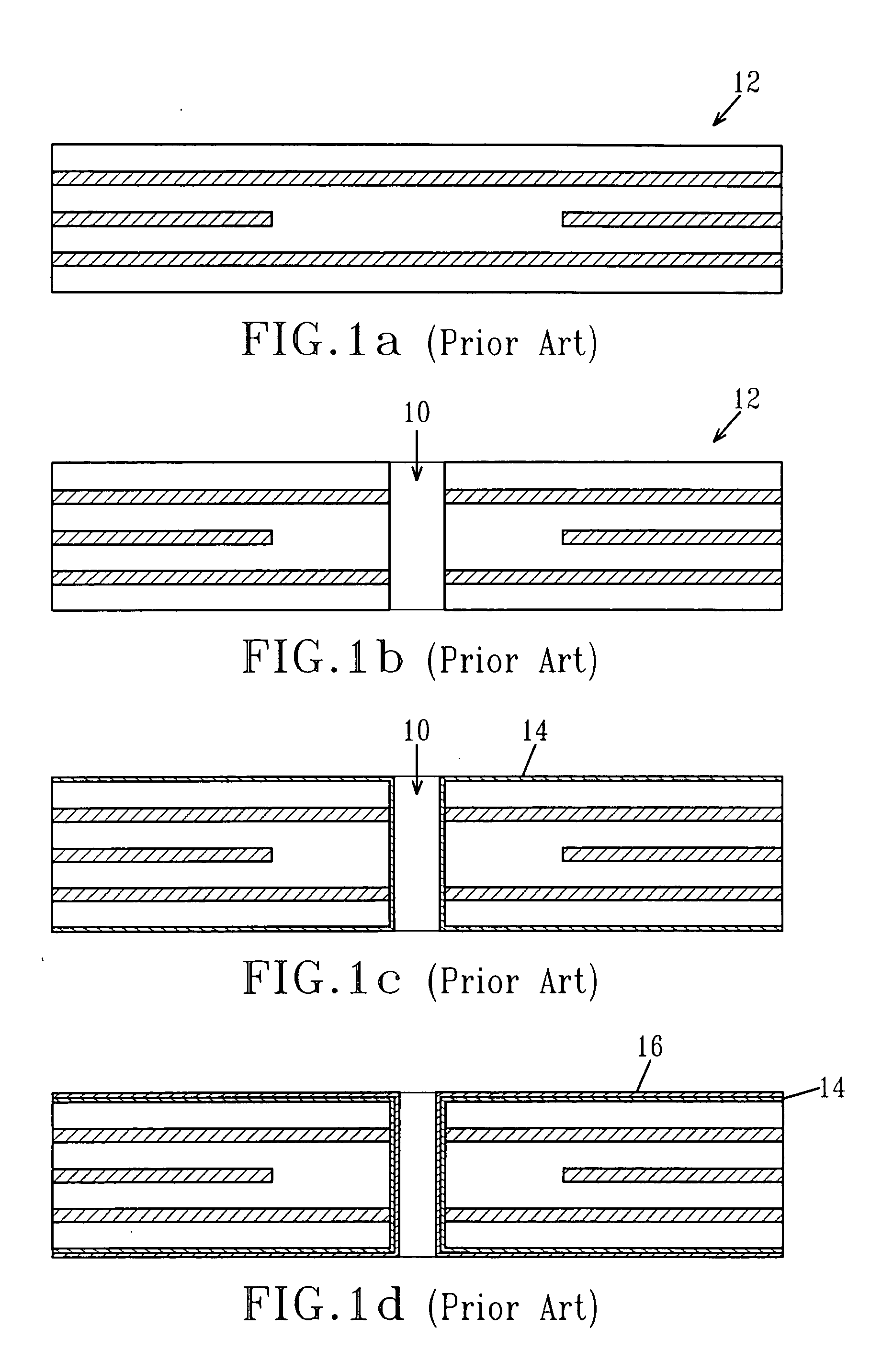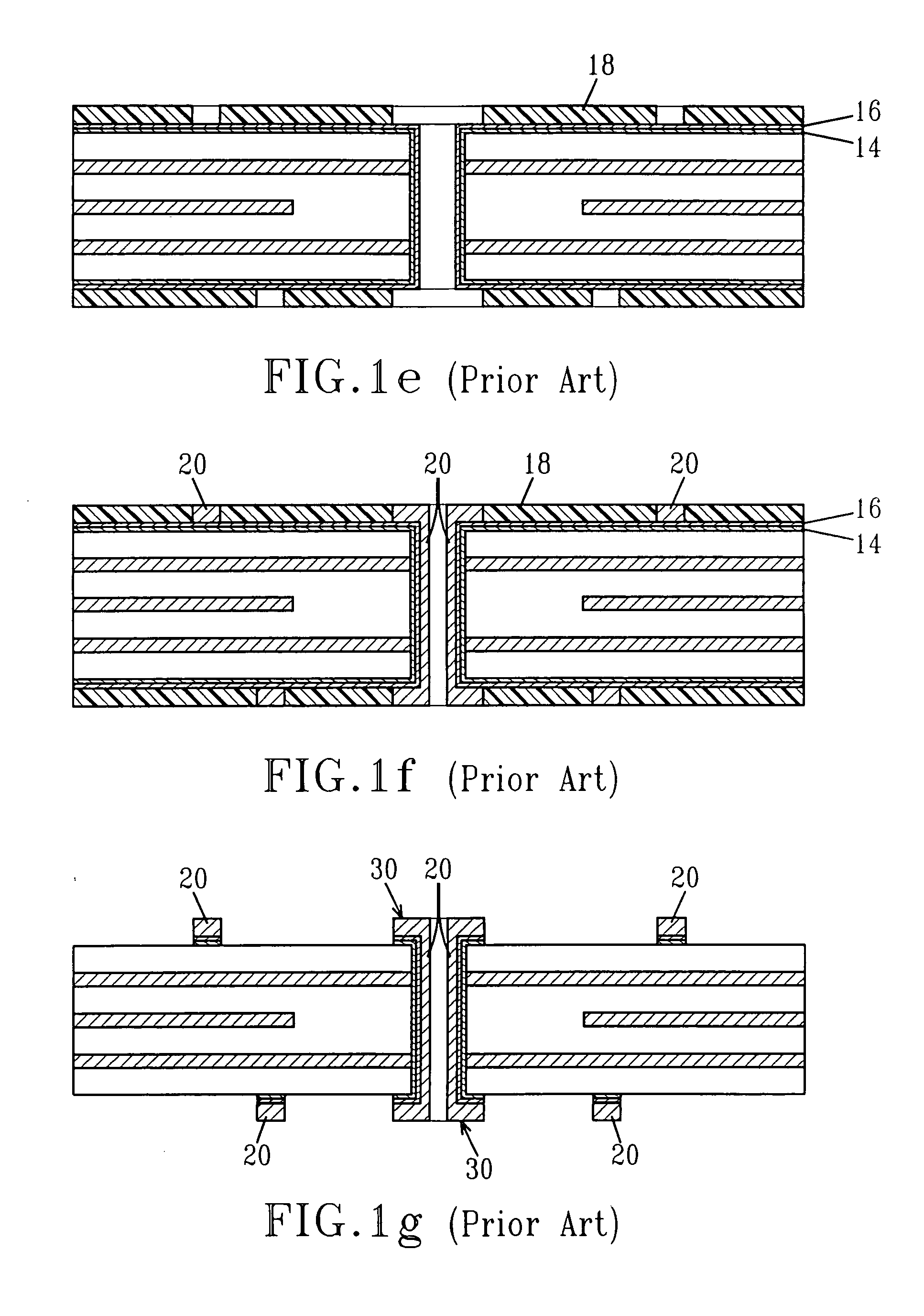Manufacture of printed circuit boards with stubless plated through-holes
a technology of printed circuit boards and through holes, applied in the field of process, can solve problems such as electrical performance, need to be removed, and detrimental effects on signal integrity
- Summary
- Abstract
- Description
- Claims
- Application Information
AI Technical Summary
Problems solved by technology
Method used
Image
Examples
Embodiment Construction
[0018] The invention is directed to a process of copper plating a through-hole in a printed circuit board. The process comprises providing a printed circuit board (PCB) with at least two copper interconnect lines separated by an insulator in the vertical direction, and providing a through-hole in the PCB in the vertical direction such that the interconnect lines provide a copper land in the through-hole. A seed layer is then applied to an interior surface of the through-hole. An outermost portion of the seed layer is then removed from the interior surface of the through-hole with a laser. Copper is then applied to the seed layer. The term vertical direction refers to the cross-sectional direction through the PCB, i.e., from the top external planar surface to the opposite (bottom), external planar surface of the PCB.
[0019] The step of applying copper can include an electroless process to form a first copper layer on the interior surface of the through-hole. The electroless copper de...
PUM
| Property | Measurement | Unit |
|---|---|---|
| area | aaaaa | aaaaa |
| power | aaaaa | aaaaa |
| diameter | aaaaa | aaaaa |
Abstract
Description
Claims
Application Information
 Login to View More
Login to View More - R&D
- Intellectual Property
- Life Sciences
- Materials
- Tech Scout
- Unparalleled Data Quality
- Higher Quality Content
- 60% Fewer Hallucinations
Browse by: Latest US Patents, China's latest patents, Technical Efficacy Thesaurus, Application Domain, Technology Topic, Popular Technical Reports.
© 2025 PatSnap. All rights reserved.Legal|Privacy policy|Modern Slavery Act Transparency Statement|Sitemap|About US| Contact US: help@patsnap.com



